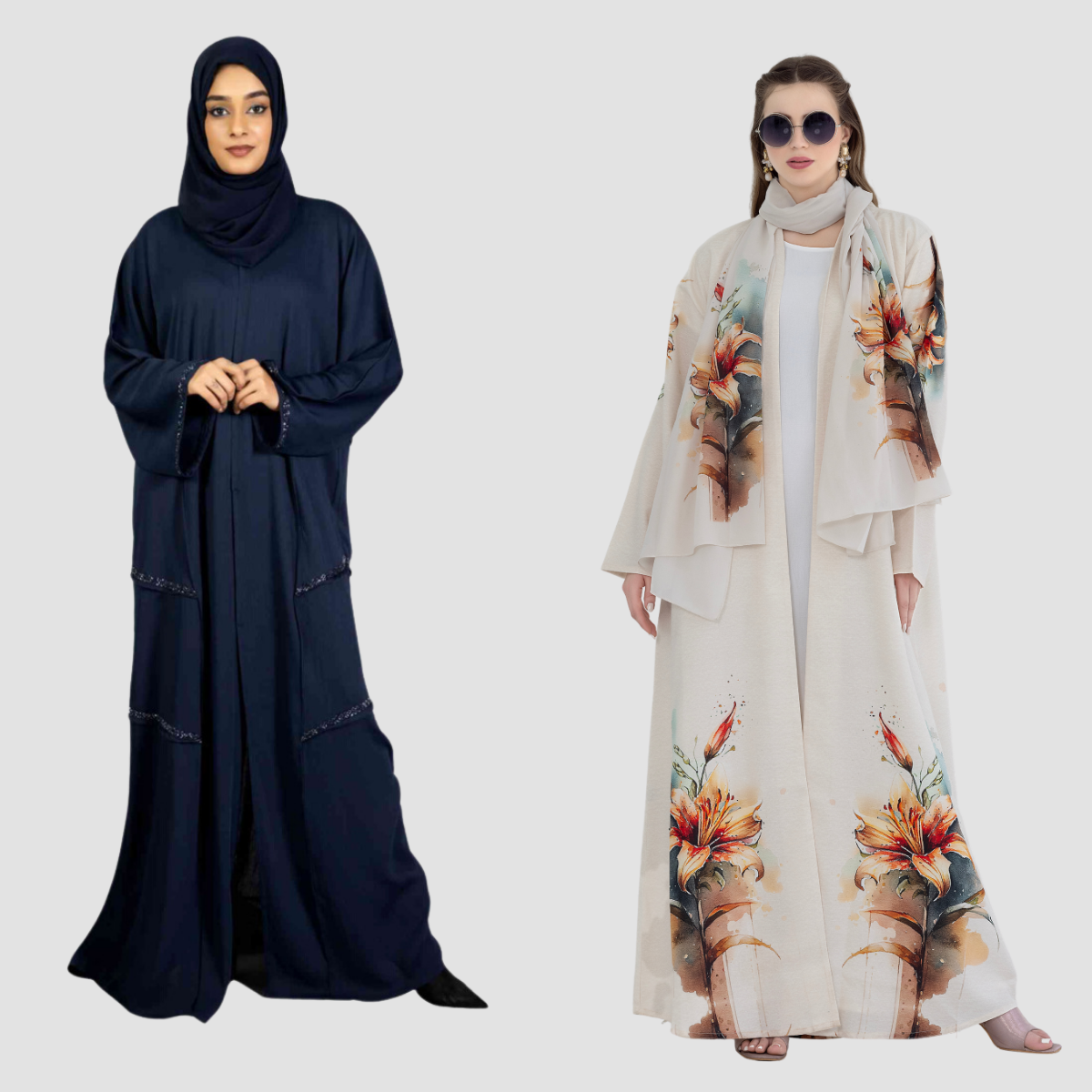
The abaya, a long-flowing cloak that symbolizes modesty and elegance, has long been a staple of traditional attire in the Arab world. Over time, it has evolved from a simple, utilitarian garment to a fashion statement that reflects a blend of cultural heritage and modern aesthetics. Today, the abaya continues to captivate global audiences as a versatile garment that effortlessly combines tradition with contemporary style. In this post, we’ll explore the abaya’s rich history, its cultural significance, and its transformation into a fashionable attire that stands the test of time.
The Abaya’s Journey: From Traditional Cloaks to Fashionable Attire
The origins of the abaya date back centuries, deeply rooted in the culture and traditions of the Arabian Peninsula. Designed as a loose-fitting garment, the abaya served as a practical cloak to ensure modesty while protecting wearers from the harsh desert climate. Early abayas were often made of plain, durable fabrics in dark tones, with little embellishment, reflecting their purpose and functionality.
As time passed, the abaya began to adopt regional variations and subtle design enhancements. In places like Oman, abayas became more than just a garment; they symbolized cultural pride and identity. Omani abayas, in particular, are known for their attention to detail, with intricate embroidery, vibrant colors, and luxurious fabrics reflecting the wearer’s social status and personal style.
Fast forward to today, and the abaya has undergone a remarkable transformation. While its core purpose of modesty remains unchanged, it now embraces contemporary trends. From sleek cuts to bold embellishments, modern abayas reflect the creativity of designers who reimagine this timeless garment while respecting its cultural roots.
Reflection on Its Enduring Cultural Importance Despite Modern Changes
Despite its evolution, the abaya continues to hold immense cultural significance. In countries like Oman, it remains a powerful symbol of heritage and modesty. Many women wear the abaya not just as a fashion choice but as a representation of their identity and values.
Modern abayas strike a delicate balance between tradition and innovation. For instance, today’s abayas feature a variety of fabrics such as silk, chiffon, and organza, offering lighter, more comfortable options while maintaining their elegance. Designs have also become more diverse, ranging from minimalist styles for daily wear to intricate, embellished pieces for special occasions.
The global interest in abayas has further solidified their importance. On international runways and fashion events, abayas are celebrated for their versatility and sophistication.
For those looking to embrace this iconic garment, the digital age has made it easier than ever to buy abayas online. Platforms like Sara Arabia’s Collection offer an extensive range of abayas that cater to diverse tastes. Whether you prefer classic black abayas or contemporary styles with bold patterns, online shopping allows you to explore a variety of options that suit your preferences and lifestyle.
Appreciating the Abaya as a Symbol of Heritage and Evolving Style
The abaya’s ability to adapt to changing times is a testament to its enduring relevance. It has become more than just a garment; it’s a canvas for artistic expression and a medium for blending tradition with modernity.
Take, for example, Sara Arabia’s Collection, which perfectly embodies this balance. The collection showcases abayas that pay homage to their traditional roots while embracing contemporary trends. With a focus on high-quality fabrics, intricate designs, and impeccable craftsmanship, Sara Arabia’s abayas highlight the versatility of this iconic garment.
Here are some standout features of modern abayas that make them both fashionable and culturally significant:
For those in Oman or looking for authentic designs, buying abayas online from Sara Arabia provides access to a curated collection that celebrates the abaya’s rich history and evolving style.
Conclusion
The culture of the abaya is a story of transformation, resilience, and creativity. From its humble beginnings as a traditional cloak to its current status as a fashionable attire, the abaya reflects the rich heritage and evolving tastes of the Arab world.
Designers have played a pivotal role in preserving the abaya’s cultural essence while reimagining it for modern audiences. Their collections showcase the abaya as both a symbol of heritage and a stylish garment that transcends borders and traditions.
Whether you’re in Oman or browsing abayas online, take a moment to appreciate the artistry and history behind this iconic garment. Celebrate the abaya not just as a piece of clothing, but as a cultural treasure that embodies grace, elegance, and timeless style.
By embracing the abaya, we honor its legacy while celebrating its future.
 Free Shipping
Free Shipping
 Delivery on time
Delivery on time
 100% Secure Payment
100% Secure Payment
Copyright © All right reserved Sara Arabia (SARA PLAZA GEN. TRAD. & CONT. CO. WLL.).



Leave a Comment
Please note, comments must be approved before they are published